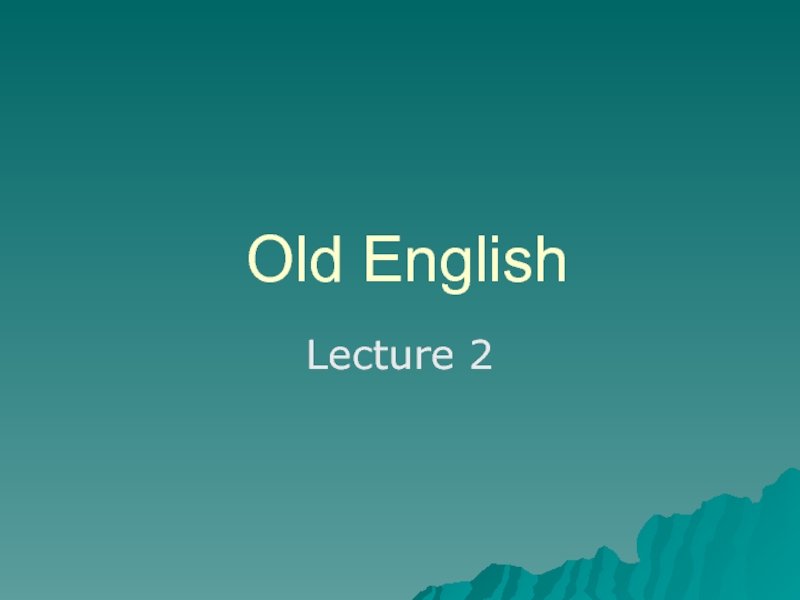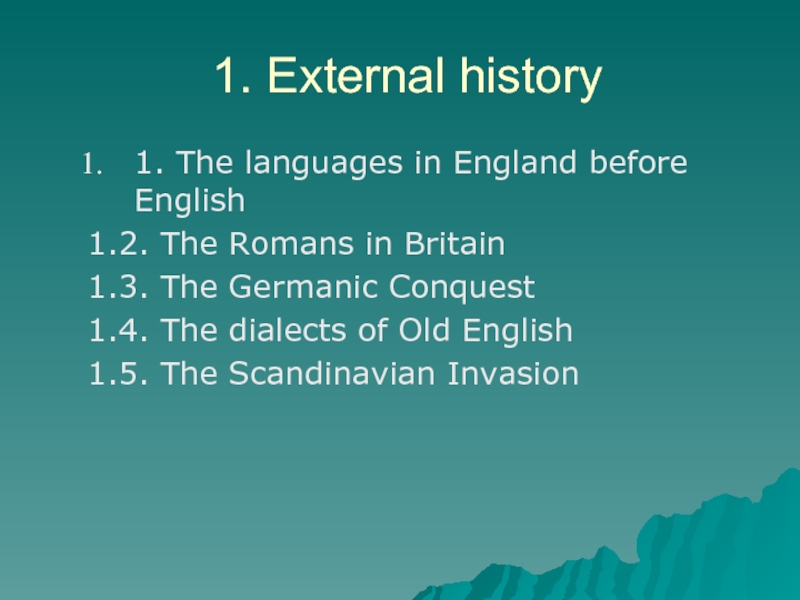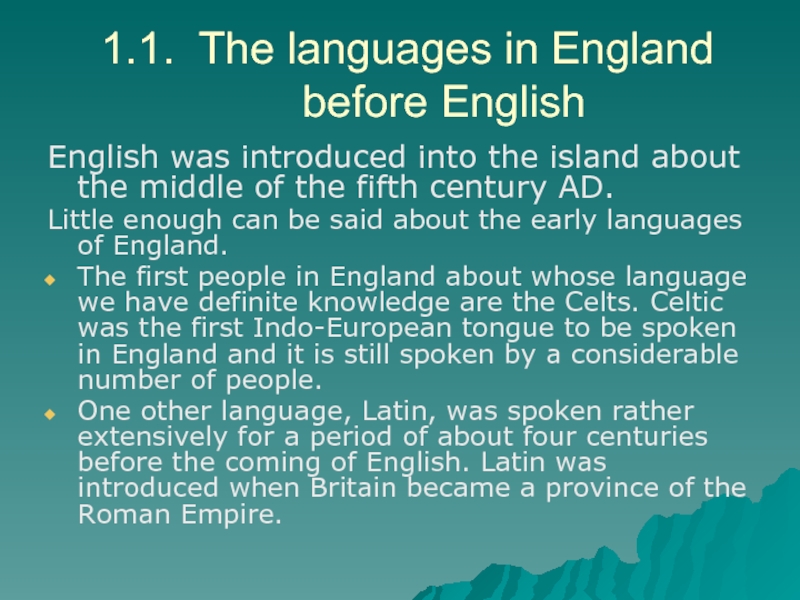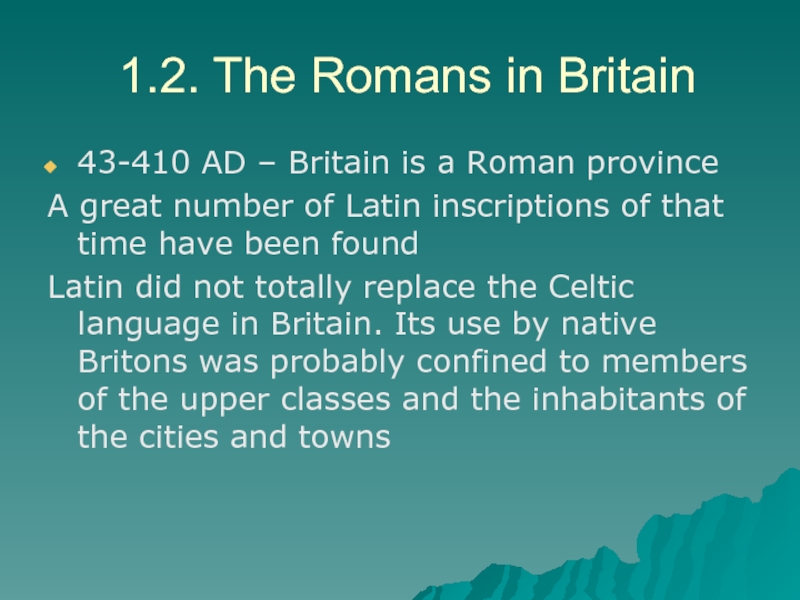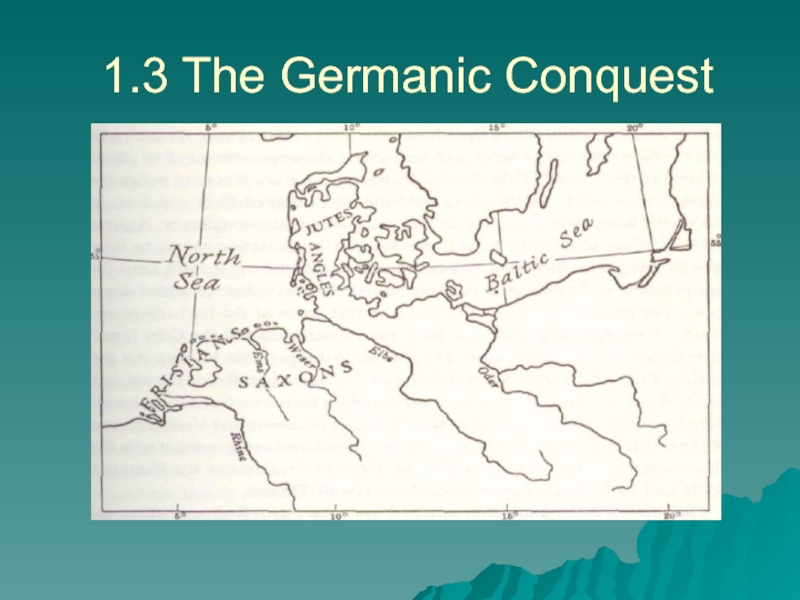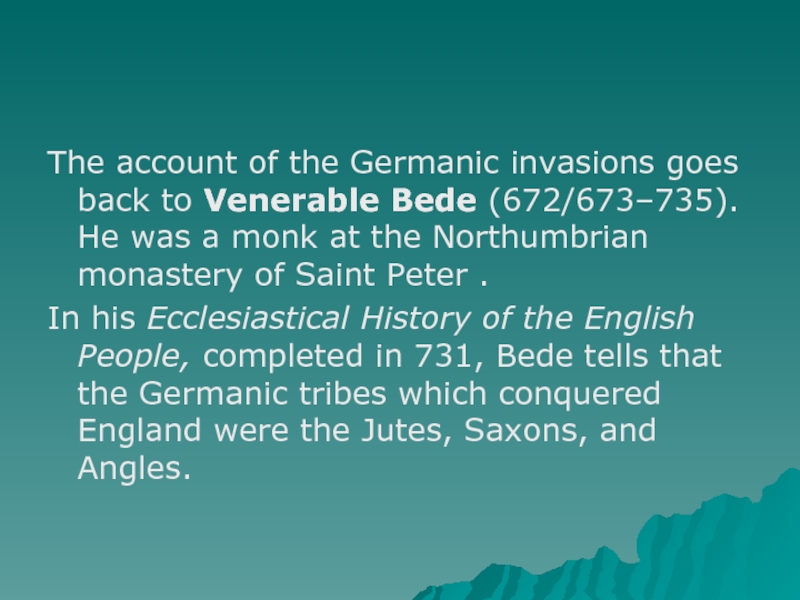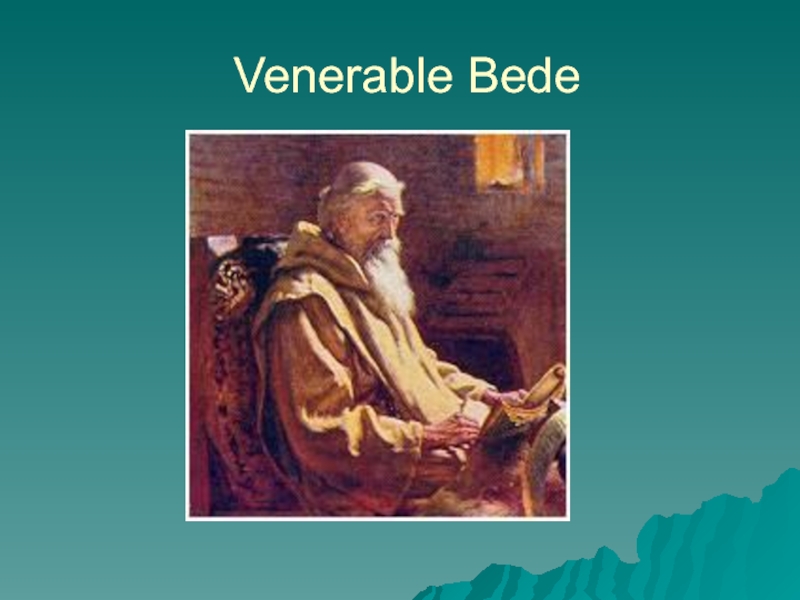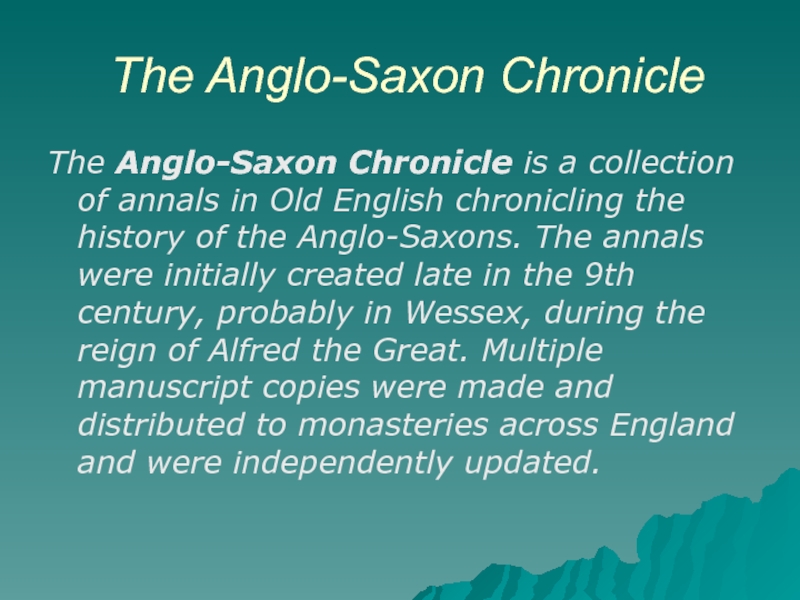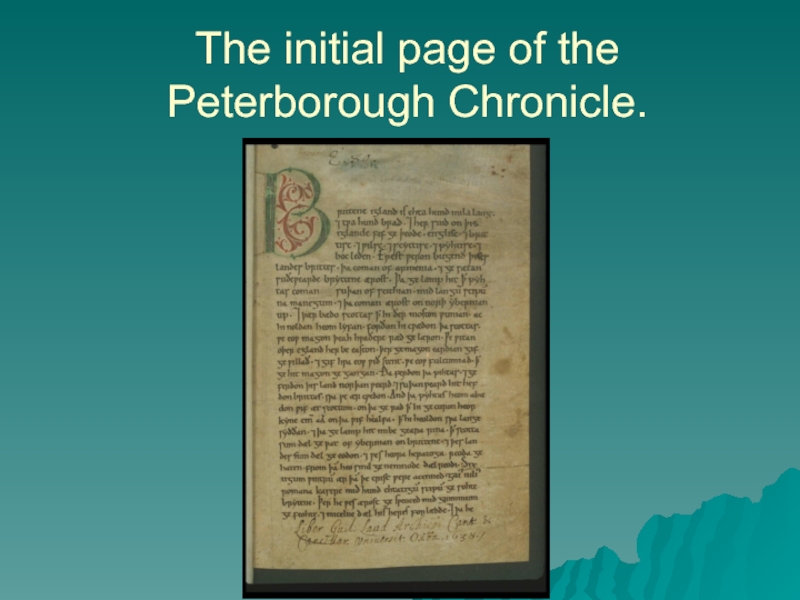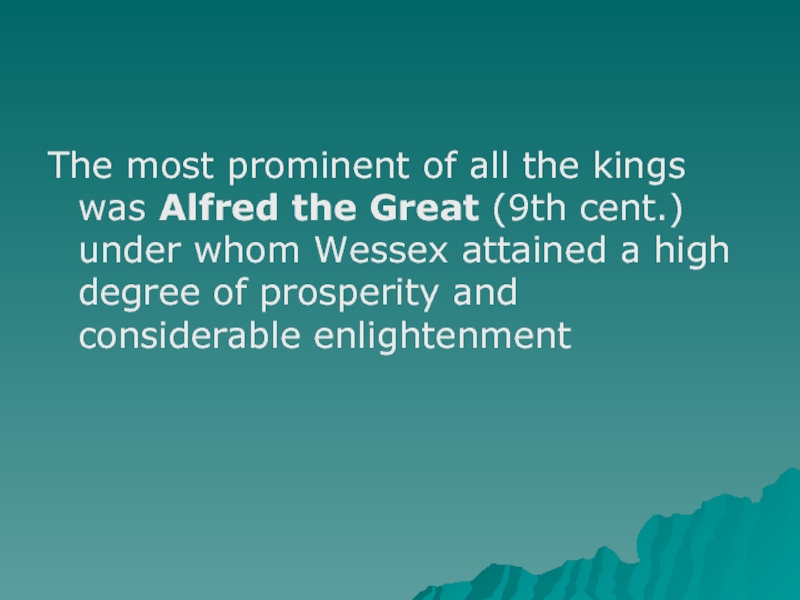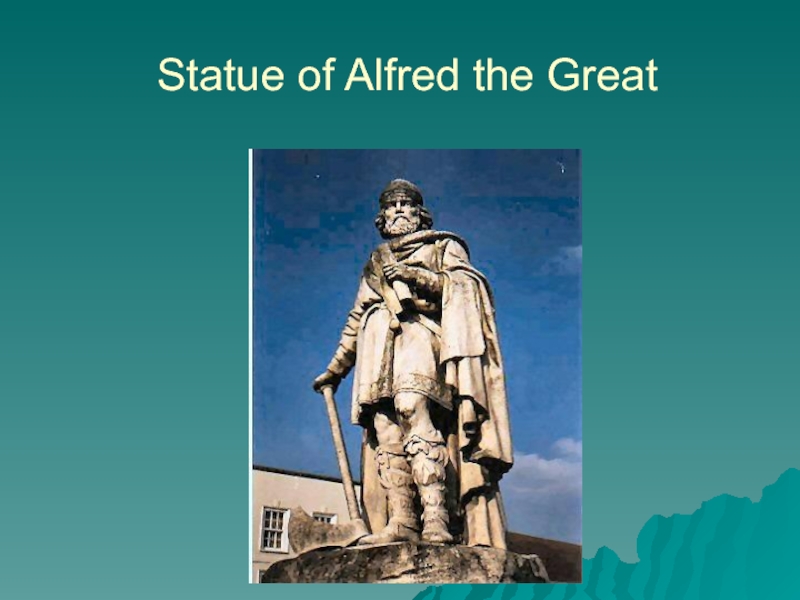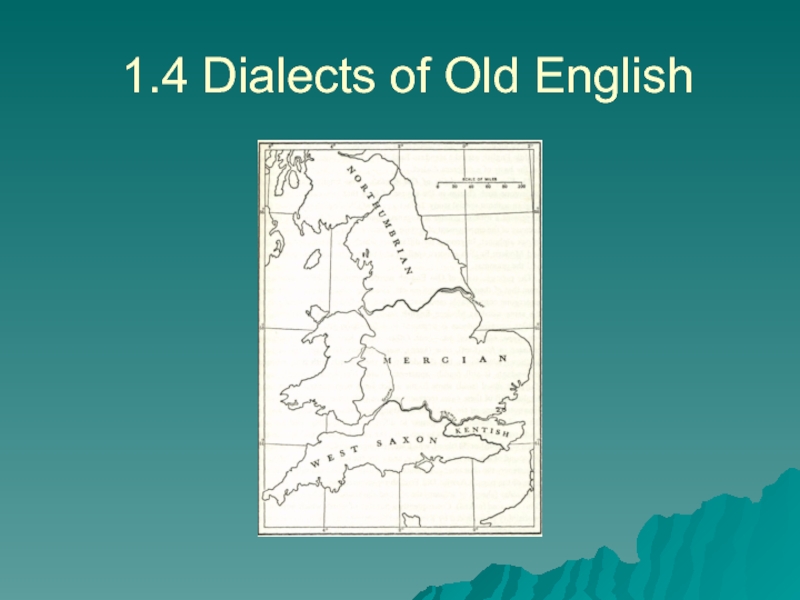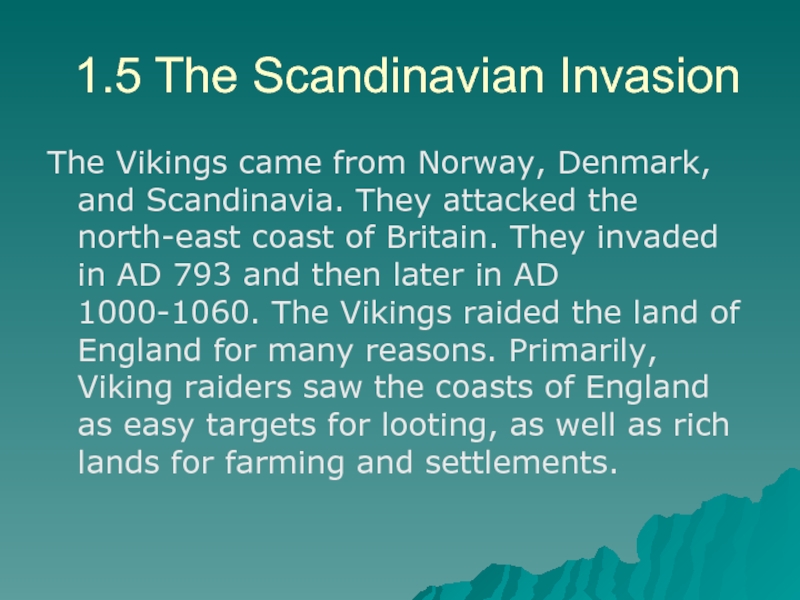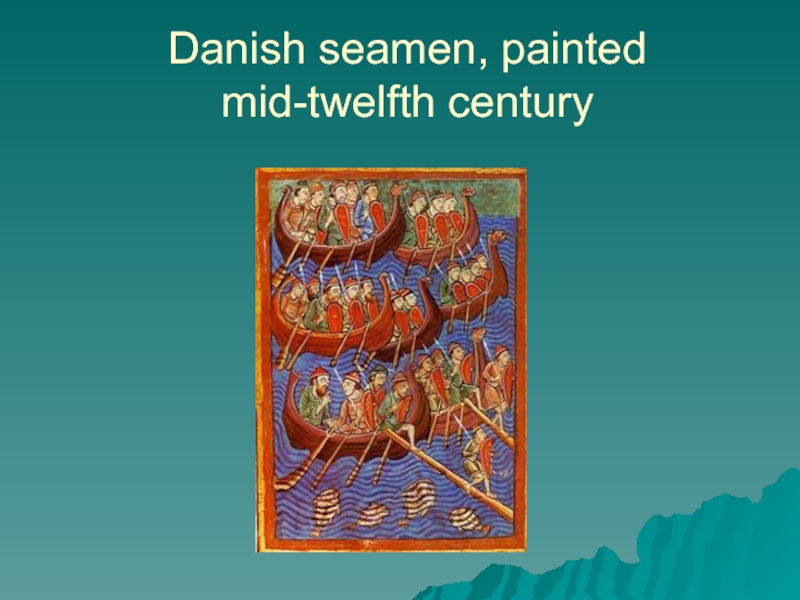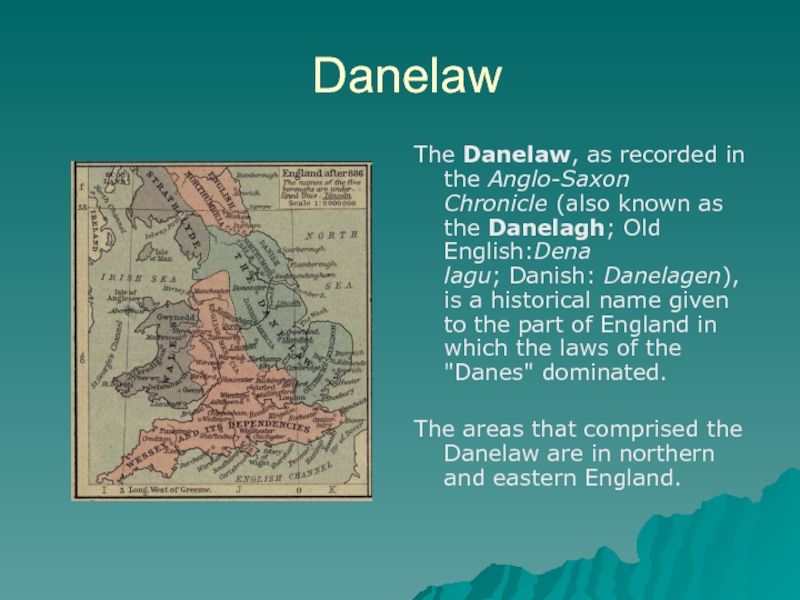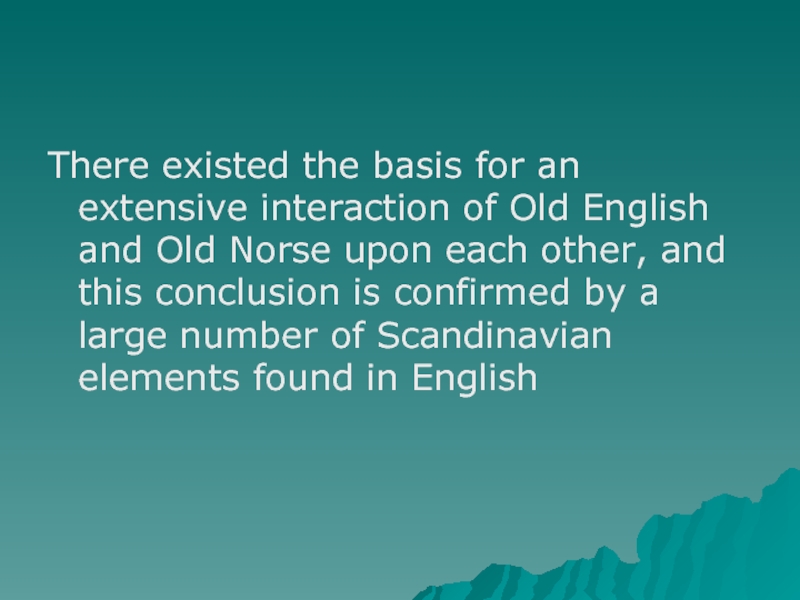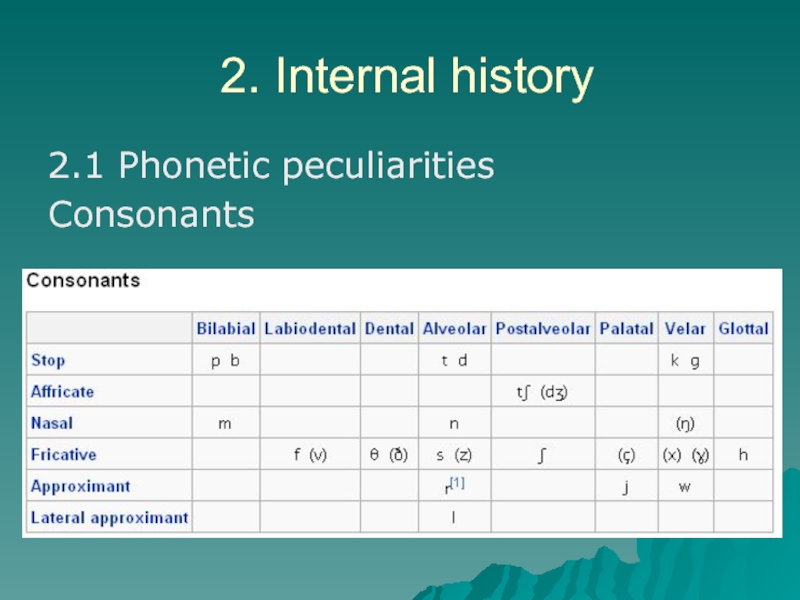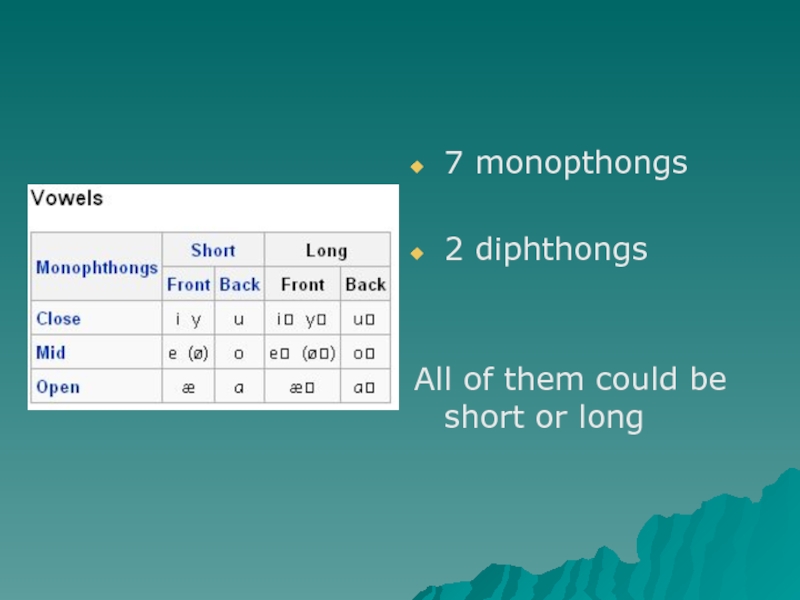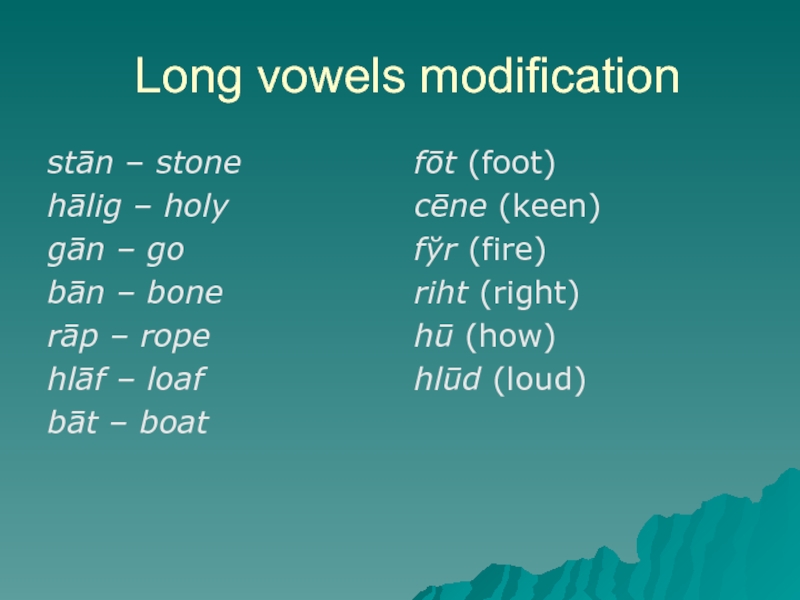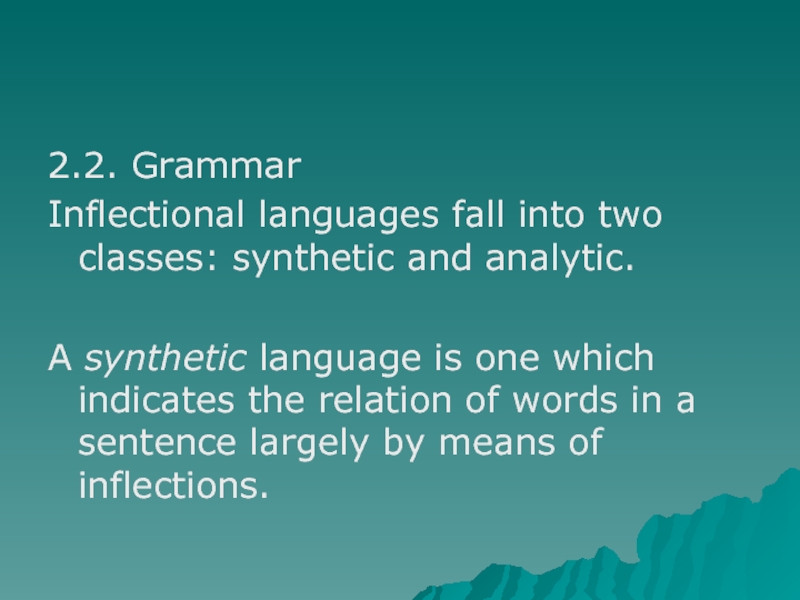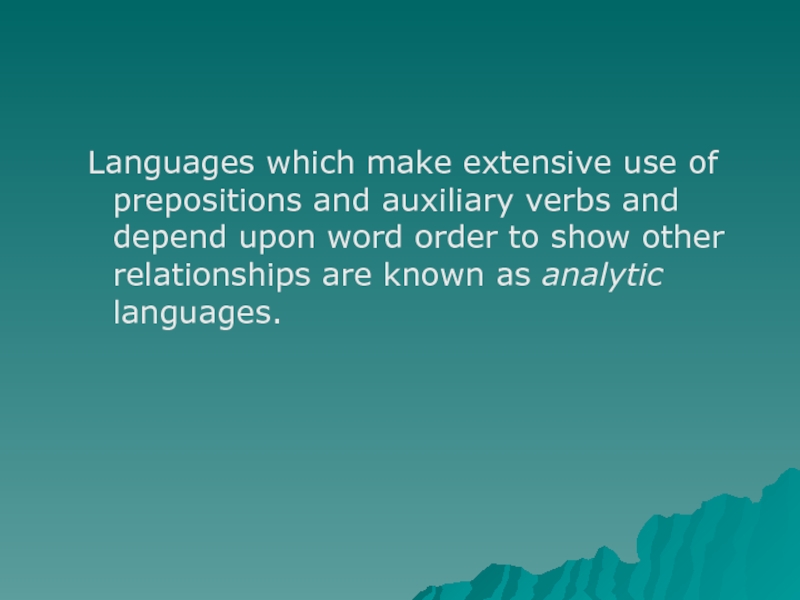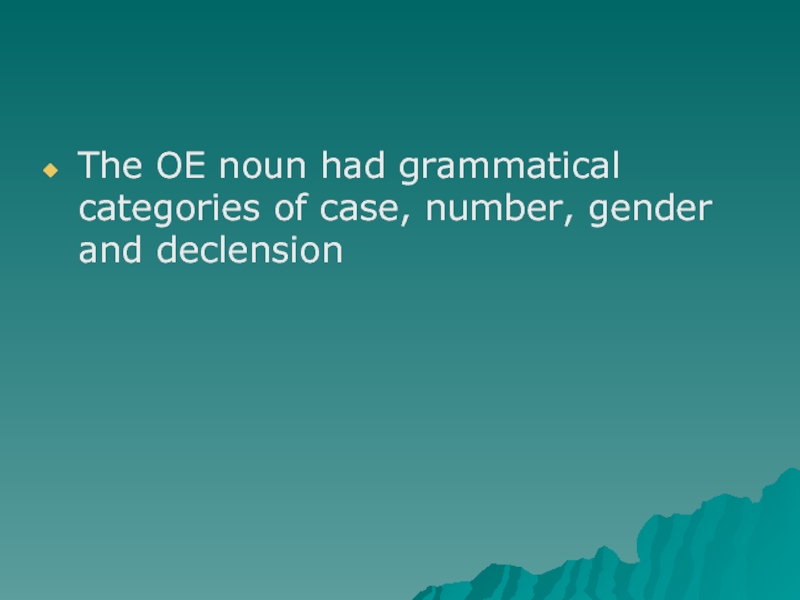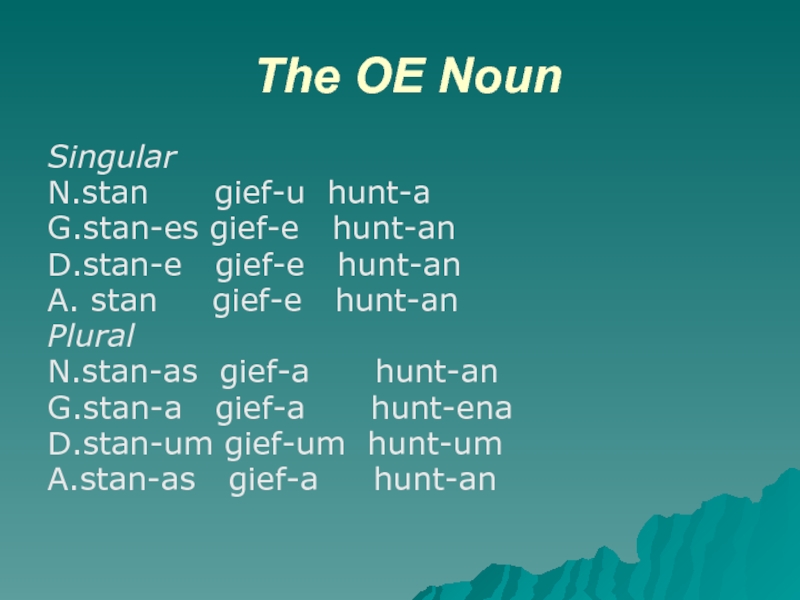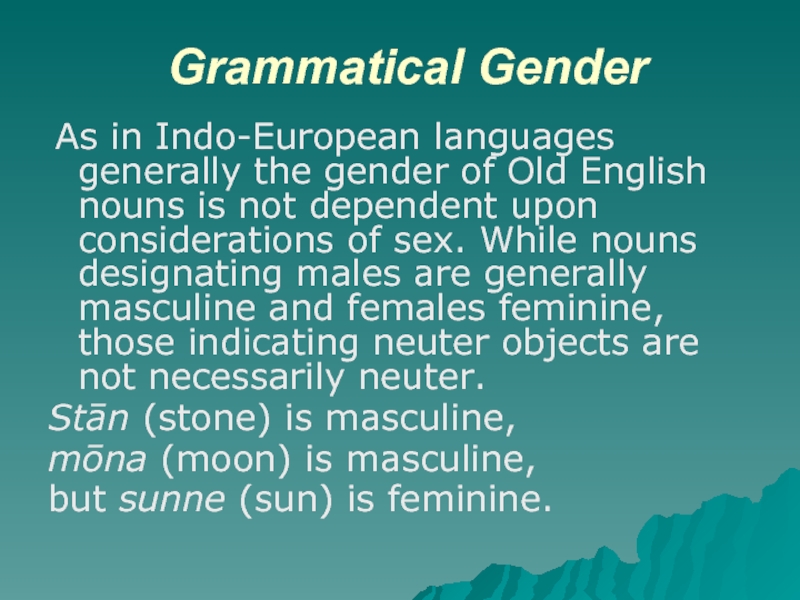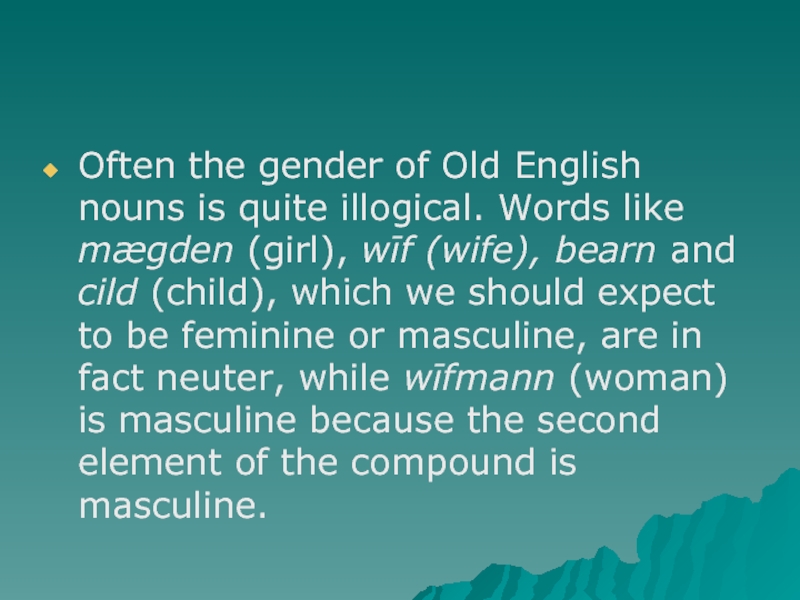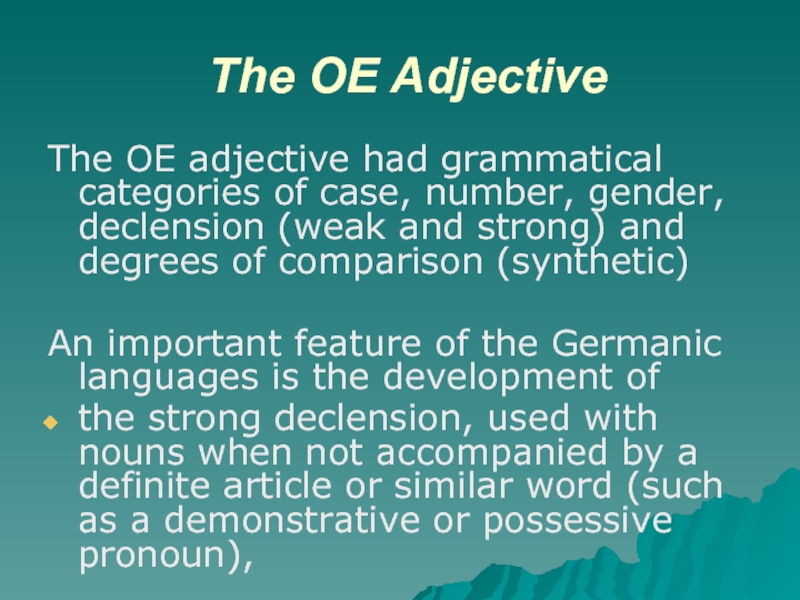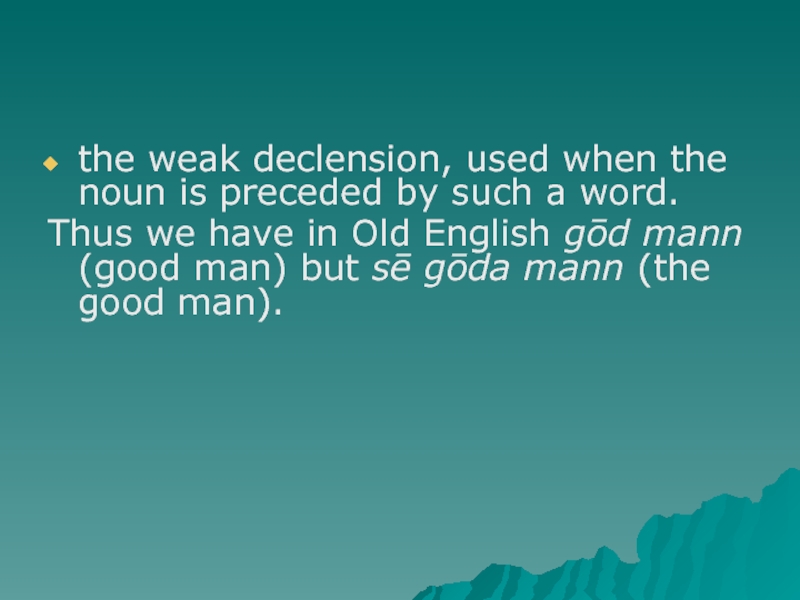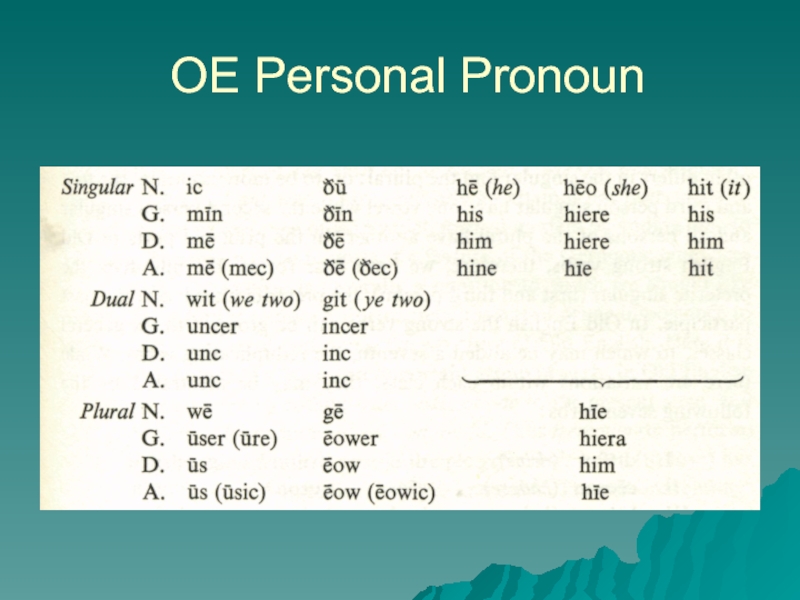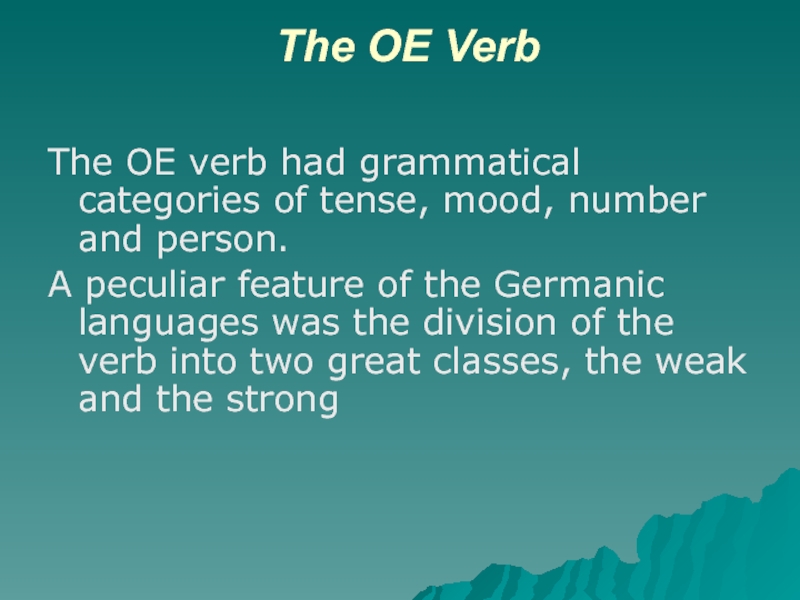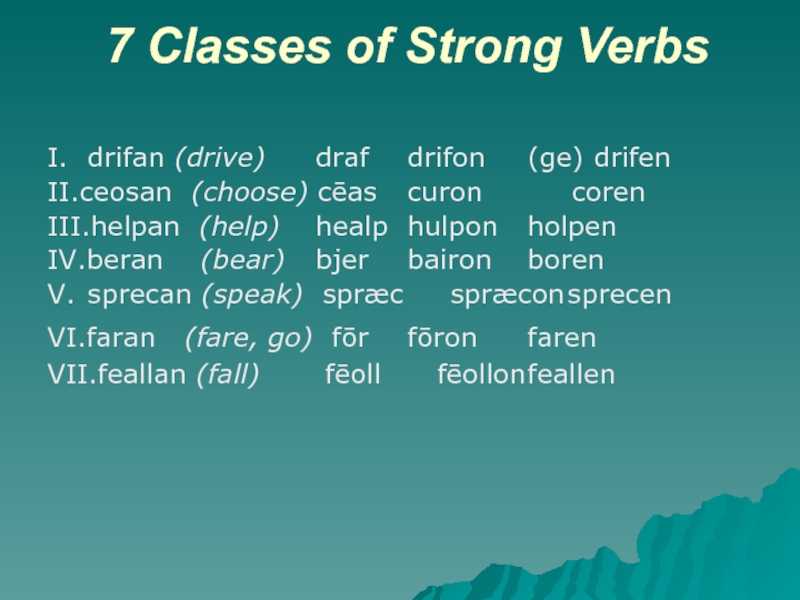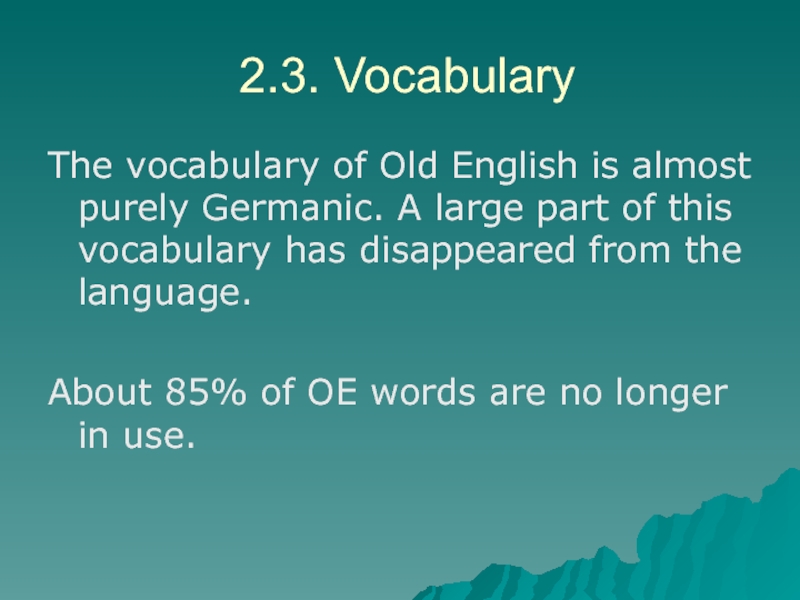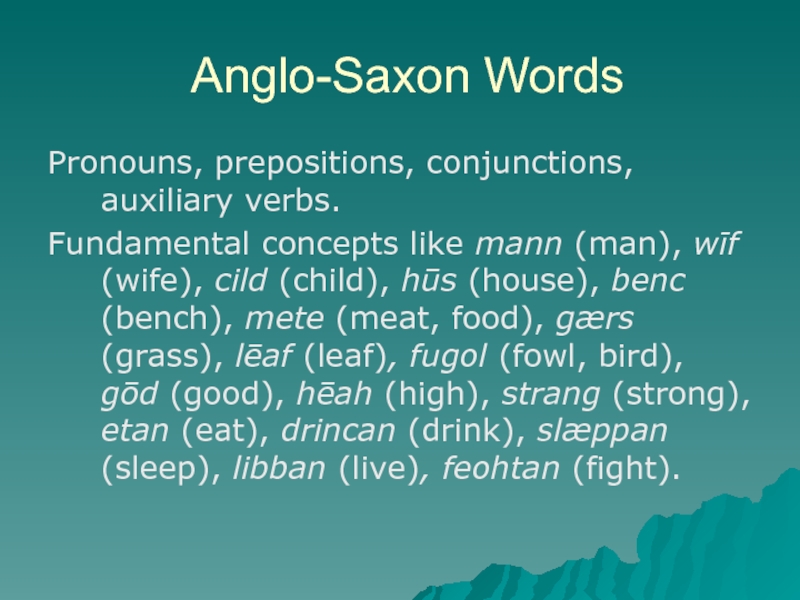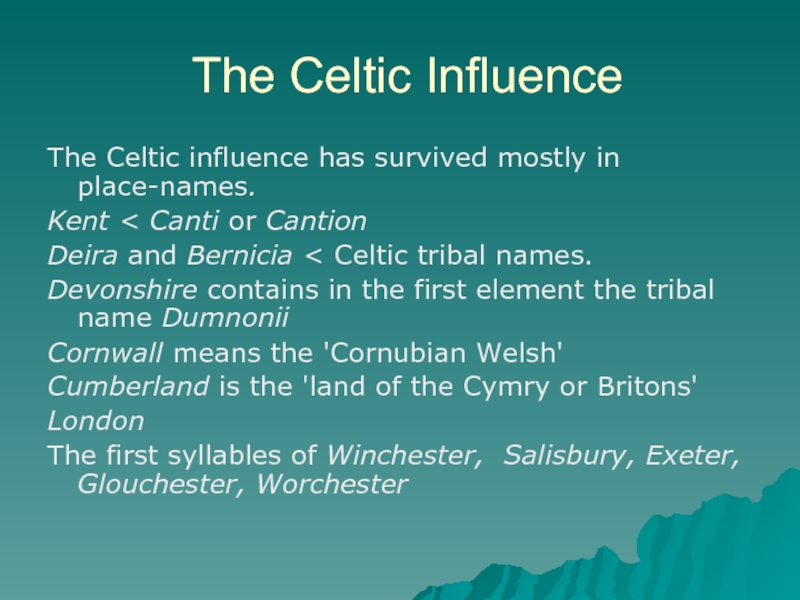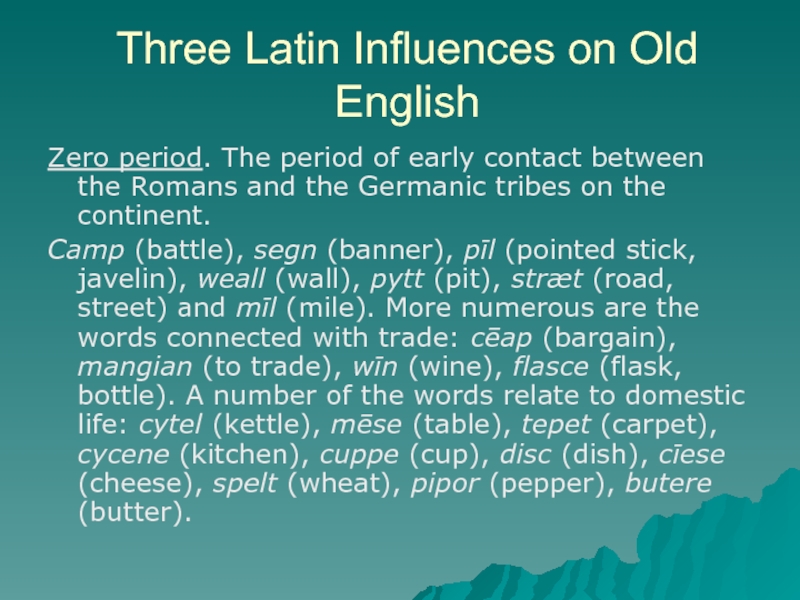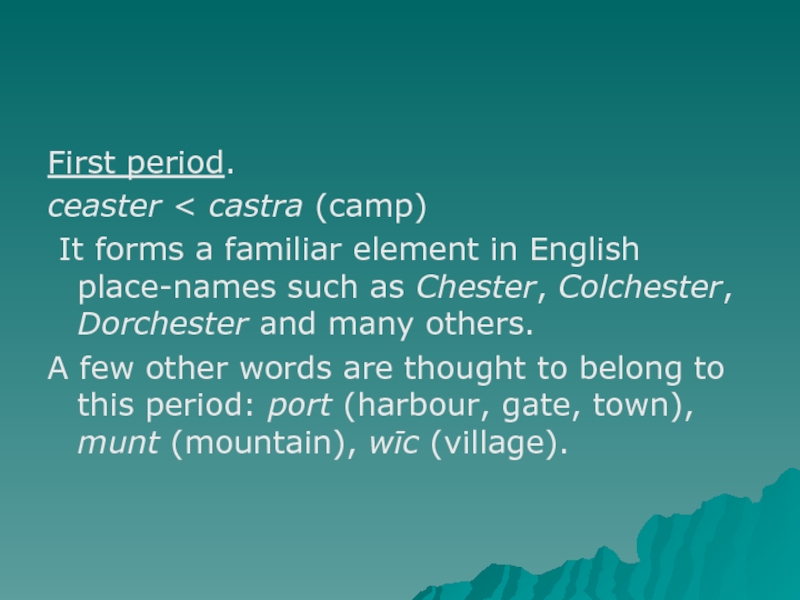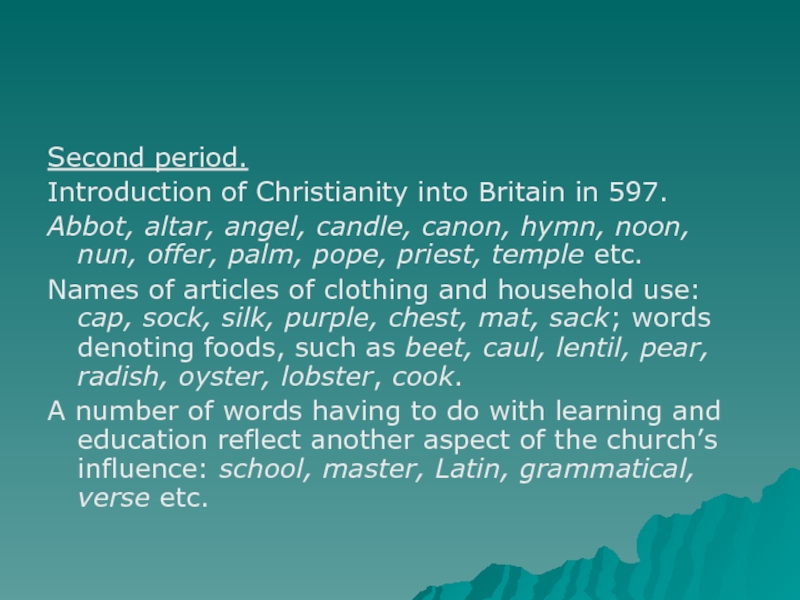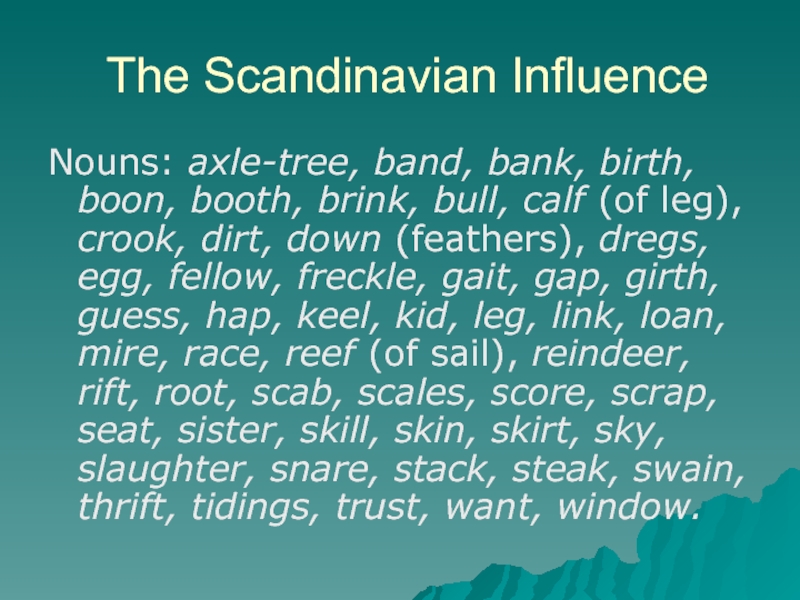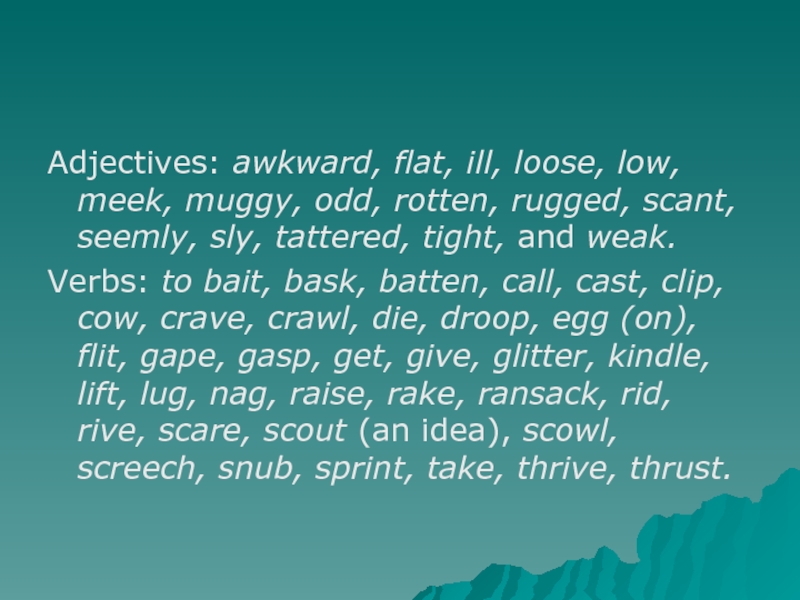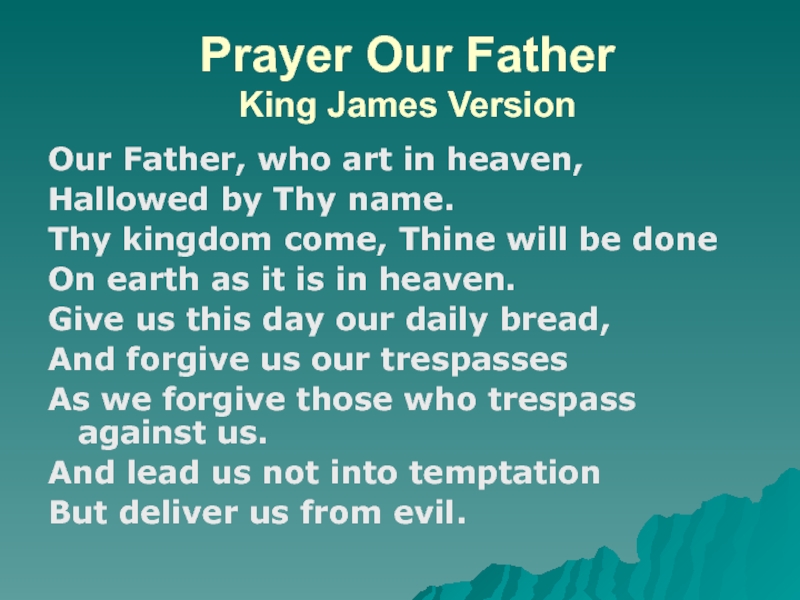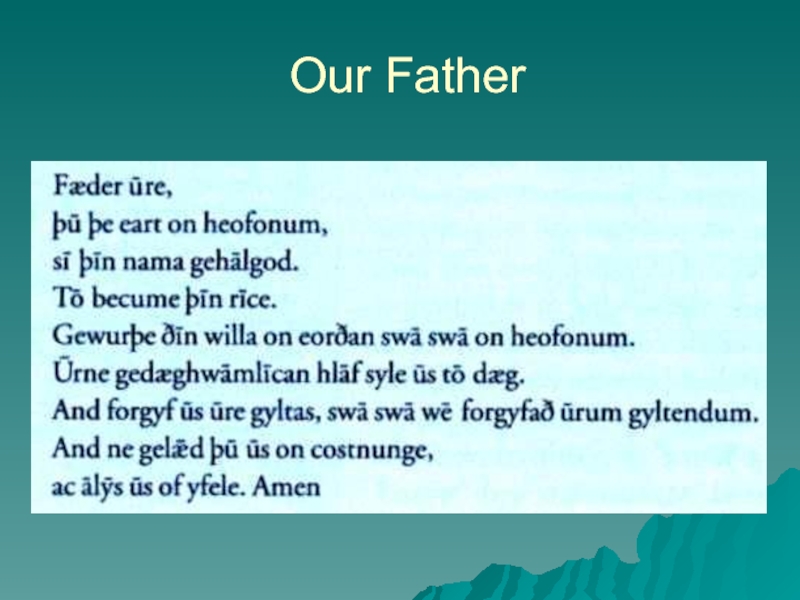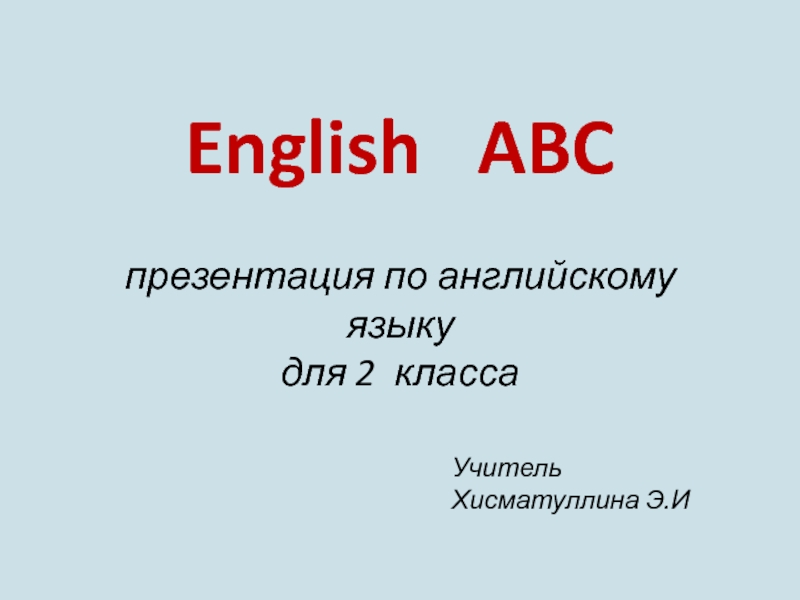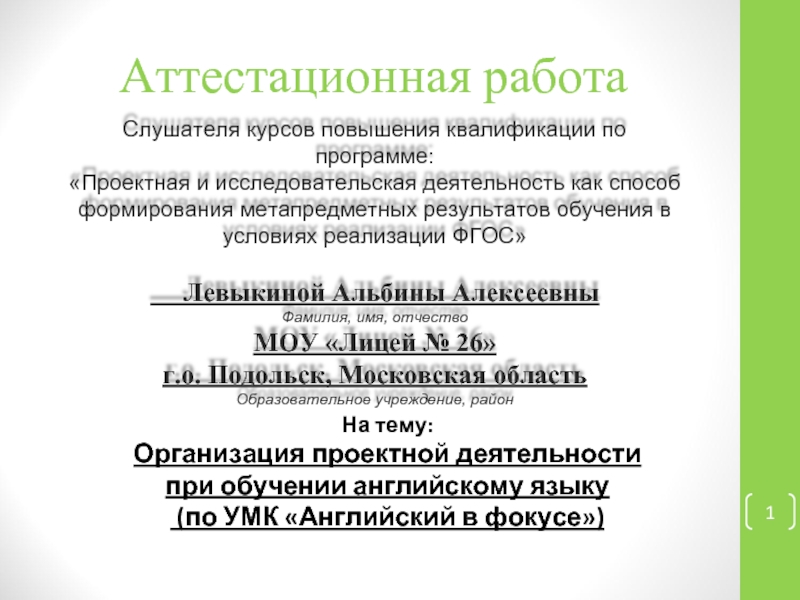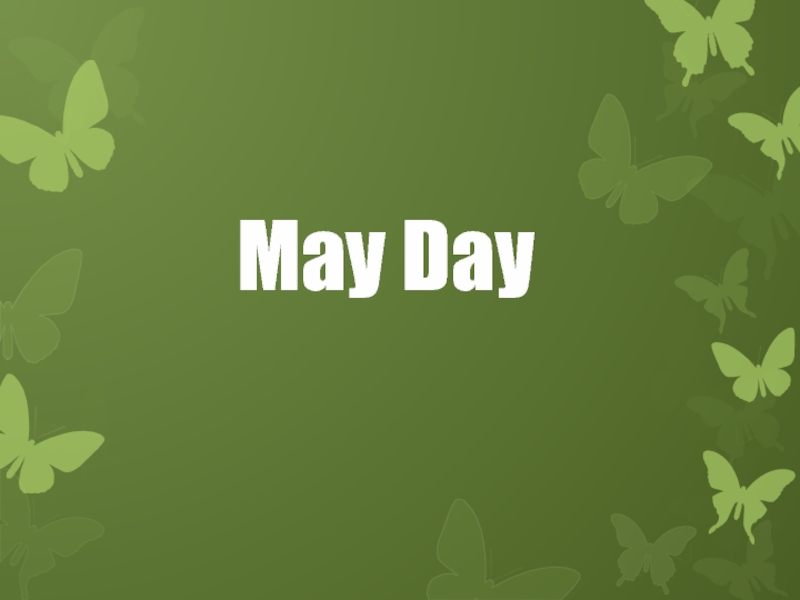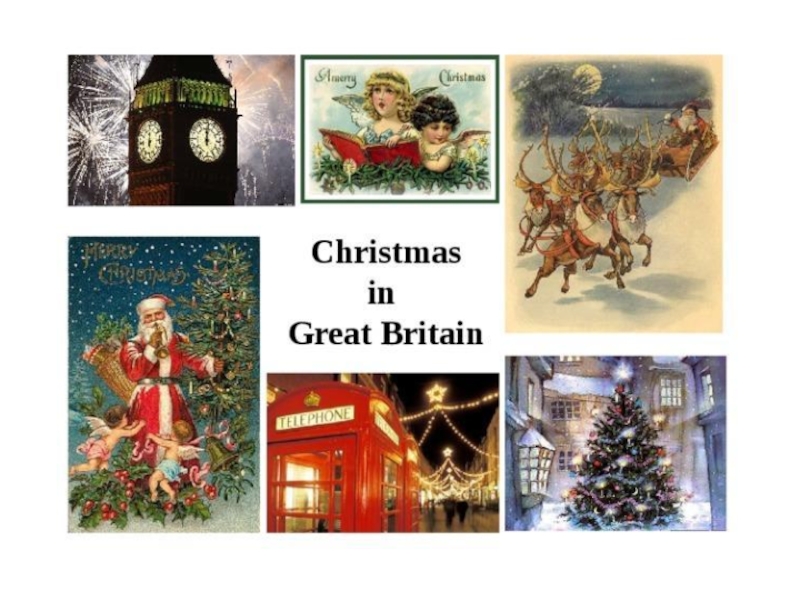- Главная
- Разное
- Дизайн
- Бизнес и предпринимательство
- Аналитика
- Образование
- Развлечения
- Красота и здоровье
- Финансы
- Государство
- Путешествия
- Спорт
- Недвижимость
- Армия
- Графика
- Культурология
- Еда и кулинария
- Лингвистика
- Английский язык
- Астрономия
- Алгебра
- Биология
- География
- Детские презентации
- Информатика
- История
- Литература
- Маркетинг
- Математика
- Медицина
- Менеджмент
- Музыка
- МХК
- Немецкий язык
- ОБЖ
- Обществознание
- Окружающий мир
- Педагогика
- Русский язык
- Технология
- Физика
- Философия
- Химия
- Шаблоны, картинки для презентаций
- Экология
- Экономика
- Юриспруденция
Old English презентация
Содержание
- 1. Old English
- 2. 1. External history 1. The languages in
- 3. 1.1. The languages in England before English
- 4. 1.2. The Romans in Britain 43-410 AD
- 5. 1.3 The Germanic Conquest
- 6. The account of the Germanic invasions
- 7. Venerable Bede
- 8. The Anglo-Saxon Chronicle The Anglo-Saxon Chronicle is
- 9. The initial page of the Peterborough Chronicle.
- 10. The most prominent of all the
- 11. Statue of Alfred the Great
- 12. 1.4 Dialects of Old English
- 13. 1.5 The Scandinavian Invasion The Vikings came
- 14. Danish seamen, painted mid-twelfth century
- 15. Danelaw The Danelaw, as recorded in the Anglo-Saxon Chronicle (also
- 16. There existed the basis for an
- 17. 2. Internal history 2.1 Phonetic peculiarities Consonants
- 18. 7 monopthongs 2 diphthongs
- 19. Long vowels modification stān – stone
- 20. 2.2. Grammar Inflectional languages fall into
- 21. Languages which make extensive use of
- 22. The OE noun had grammatical categories of case, number, gender and declension
- 23. The OE Noun Singular N.stan
- 24. Grammatical Gender As in Indo-European languages
- 25. Often the gender of Old English
- 26. The OE Adjective The OE adjective had
- 27. the weak declension, used when the
- 28. OE Personal Pronoun
- 29. The OE Verb The OE verb
- 30. 7 Classes of Strong Verbs
- 31. 2.3. Vocabulary The vocabulary of Old English
- 32. Anglo-Saxon Words Pronouns, prepositions, conjunctions, auxiliary verbs.
- 33. The Celtic Influence The Celtic influence
- 34. Three Latin Influences on Old English
- 35. First period. ceaster < castra
- 36. Second period. Introduction of Christianity
- 37. The Scandinavian Influence Nouns: axle-tree, band,
- 38. Adjectives: awkward, flat, ill, loose, low,
- 39. Prayer Our Father King James Version Our
- 40. Our Father
Слайд 21. External history
1. The languages in England before English
1.2. The Romans
in Britain
1.3. The Germanic Conquest
1.4. The dialects of Old English
1.5. The Scandinavian Invasion
1.3. The Germanic Conquest
1.4. The dialects of Old English
1.5. The Scandinavian Invasion
Слайд 31.1. The languages in England before English
English was introduced into the
island about the middle of the fifth century AD.
Little enough can be said about the early languages of England.
The first people in England about whose language we have definite knowledge are the Celts. Celtic was the first Indo-European tongue to be spoken in England and it is still spoken by a considerable number of people.
One other language, Latin, was spoken rather extensively for a period of about four centuries before the coming of English. Latin was introduced when Britain became a province of the Roman Empire.
Little enough can be said about the early languages of England.
The first people in England about whose language we have definite knowledge are the Celts. Celtic was the first Indo-European tongue to be spoken in England and it is still spoken by a considerable number of people.
One other language, Latin, was spoken rather extensively for a period of about four centuries before the coming of English. Latin was introduced when Britain became a province of the Roman Empire.
Слайд 41.2. The Romans in Britain
43-410 AD – Britain is a Roman
province
A great number of Latin inscriptions of that time have been found
Latin did not totally replace the Celtic language in Britain. Its use by native Britons was probably confined to members of the upper classes and the inhabitants of the cities and towns
A great number of Latin inscriptions of that time have been found
Latin did not totally replace the Celtic language in Britain. Its use by native Britons was probably confined to members of the upper classes and the inhabitants of the cities and towns
Слайд 6
The account of the Germanic invasions goes back to Venerable Bede
(672/673–735). He was a monk at the Northumbrian monastery of Saint Peter .
In his Ecclesiastical History of the English People, completed in 731, Bede tells that the Germanic tribes which conquered England were the Jutes, Saxons, and Angles.
In his Ecclesiastical History of the English People, completed in 731, Bede tells that the Germanic tribes which conquered England were the Jutes, Saxons, and Angles.
Слайд 8The Anglo-Saxon Chronicle
The Anglo-Saxon Chronicle is a collection of annals in
Old English chronicling the history of the Anglo-Saxons. The annals were initially created late in the 9th century, probably in Wessex, during the reign of Alfred the Great. Multiple manuscript copies were made and distributed to monasteries across England and were independently updated.
Слайд 10
The most prominent of all the kings was Alfred the Great
(9th cent.) under whom Wessex attained a high degree of prosperity and considerable enlightenment
Слайд 131.5 The Scandinavian Invasion
The Vikings came from Norway, Denmark, and Scandinavia.
They attacked the north-east coast of Britain. They invaded in AD 793 and then later in AD 1000-1060. The Vikings raided the land of England for many reasons. Primarily, Viking raiders saw the coasts of England as easy targets for looting, as well as rich lands for farming and settlements.
Слайд 15Danelaw
The Danelaw, as recorded in the Anglo-Saxon Chronicle (also known as the Danelagh; Old English:Dena lagu; Danish: Danelagen),
is a historical name given to the part of England in which the laws of the "Danes" dominated.
The areas that comprised the Danelaw are in northern and eastern England.
The areas that comprised the Danelaw are in northern and eastern England.
Слайд 16
There existed the basis for an extensive interaction of Old English
and Old Norse upon each other, and this conclusion is confirmed by a large number of Scandinavian elements found in English
Слайд 19Long vowels modification
stān – stone
hālig – holy
gān – go
bān
– bone
rāp – rope
hlāf – loaf
bāt – boat
rāp – rope
hlāf – loaf
bāt – boat
fōt (foot)
cēne (keen)
fўr (fire)
riht (right)
hū (how)
hlūd (loud)
Слайд 20
2.2. Grammar
Inflectional languages fall into two classes: synthetic and analytic.
A
synthetic language is one which indicates the relation of words in a sentence largely by means of inflections.
Слайд 21
Languages which make extensive use of prepositions and auxiliary verbs and
depend upon word order to show other relationships are known as analytic languages.
Слайд 23The OE Noun
Singular
N.stan gief-u hunt-a
G.stan-es gief-e
hunt-an
D.stan-e gief-e hunt-an
A. stan gief-e hunt-an
Plural
N.stan-as gief-a hunt-an
G.stan-a gief-a hunt-ena
D.stan-um gief-um hunt-um
A.stan-as gief-a hunt-an
D.stan-e gief-e hunt-an
A. stan gief-e hunt-an
Plural
N.stan-as gief-a hunt-an
G.stan-a gief-a hunt-ena
D.stan-um gief-um hunt-um
A.stan-as gief-a hunt-an
Слайд 24Grammatical Gender
As in Indo-European languages generally the gender of Old
English nouns is not dependent upon considerations of sex. While nouns designating males are generally masculine and females feminine, those indicating neuter objects are not necessarily neuter.
Stān (stone) is masculine,
mōna (moon) is masculine,
but sunne (sun) is feminine.
Stān (stone) is masculine,
mōna (moon) is masculine,
but sunne (sun) is feminine.
Слайд 25
Often the gender of Old English nouns is quite illogical. Words
like mægden (girl), wīf (wife), bearn and cild (child), which we should expect to be feminine or masculine, are in fact neuter, while wīfmann (woman) is masculine because the second element of the compound is masculine.
Слайд 26The OE Adjective
The OE adjective had grammatical categories of case, number,
gender, declension (weak and strong) and degrees of comparison (synthetic)
An important feature of the Germanic languages is the development of
the strong declension, used with nouns when not accompanied by a definite article or similar word (such as a demonstrative or possessive pronoun),
An important feature of the Germanic languages is the development of
the strong declension, used with nouns when not accompanied by a definite article or similar word (such as a demonstrative or possessive pronoun),
Слайд 27
the weak declension, used when the noun is preceded by such
a word.
Thus we have in Old English gōd mann (good man) but sē gōda mann (the good man).
Thus we have in Old English gōd mann (good man) but sē gōda mann (the good man).
Слайд 29The OE Verb
The OE verb had grammatical categories of tense, mood,
number and person.
A peculiar feature of the Germanic languages was the division of the verb into two great classes, the weak and the strong
A peculiar feature of the Germanic languages was the division of the verb into two great classes, the weak and the strong
Слайд 307 Classes of Strong Verbs
I. drifan (drive) draf drifon (ge) drifen
II.ceosan
(choose) cēas curon coren
III.helpan (help) healp hulpon holpen
IV.beran (bear) bjer bairon boren
V. sprecan (speak) spræc spræcon sprecen
VI.faran (fare, go) fōr fōron faren
VII.feallan (fall) fēoll fēollon feallen
III.helpan (help) healp hulpon holpen
IV.beran (bear) bjer bairon boren
V. sprecan (speak) spræc spræcon sprecen
VI.faran (fare, go) fōr fōron faren
VII.feallan (fall) fēoll fēollon feallen
Слайд 312.3. Vocabulary
The vocabulary of Old English is almost purely Germanic. A
large part of this vocabulary has disappeared from the language.
About 85% of OE words are no longer in use.
About 85% of OE words are no longer in use.
Слайд 32Anglo-Saxon Words
Pronouns, prepositions, conjunctions, auxiliary verbs.
Fundamental concepts like mann (man), wīf
(wife), cild (child), hūs (house), benc (bench), mete (meat, food), gærs (grass), lēaf (leaf), fugol (fowl, bird), gōd (good), hēah (high), strang (strong), etan (eat), drincan (drink), slæppan (sleep), libban (live), feohtan (fight).
Слайд 33The Celtic Influence
The Celtic influence has survived mostly in place-names.
Kent < Canti or Cantion
Deira and Bernicia < Celtic tribal names.
Devonshire contains in the first element the tribal name Dumnonii
Cornwall means the 'Cornubian Welsh'
Cumberland is the 'land of the Cymry or Britons'
London
The first syllables of Winchester, Salisbury, Exeter, Glouchester, Worchester
Слайд 34Three Latin Influences on Old English
Zero period. The period of
early contact between the Romans and the Germanic tribes on the continent.
Camp (battle), segn (banner), pīl (pointed stick, javelin), weall (wall), pytt (pit), stræt (road, street) and mīl (mile). More numerous are the words connected with trade: cēap (bargain), mangian (to trade), wīn (wine), flasce (flask, bottle). A number of the words relate to domestic life: cytel (kettle), mēse (table), tepet (carpet), cycene (kitchen), cuppe (cup), disc (dish), cīese (cheese), spelt (wheat), pipor (pepper), butere (butter).
Camp (battle), segn (banner), pīl (pointed stick, javelin), weall (wall), pytt (pit), stræt (road, street) and mīl (mile). More numerous are the words connected with trade: cēap (bargain), mangian (to trade), wīn (wine), flasce (flask, bottle). A number of the words relate to domestic life: cytel (kettle), mēse (table), tepet (carpet), cycene (kitchen), cuppe (cup), disc (dish), cīese (cheese), spelt (wheat), pipor (pepper), butere (butter).
Слайд 35
First period.
ceaster < castra (camp)
It forms a familiar
element in English place-names such as Chester, Colchester, Dorchester and many others.
A few other words are thought to belong to this period: port (harbour, gate, town), munt (mountain), wīc (village).
A few other words are thought to belong to this period: port (harbour, gate, town), munt (mountain), wīc (village).
Слайд 36
Second period.
Introduction of Christianity into Britain in 597.
Abbot, altar,
angel, candle, canon, hymn, noon, nun, offer, palm, pope, priest, temple etc.
Names of articles of clothing and household use: cap, sock, silk, purple, chest, mat, sack; words denoting foods, such as beet, caul, lentil, pear, radish, oyster, lobster, cook.
A number of words having to do with learning and education reflect another aspect of the church’s influence: school, master, Latin, grammatical, verse etc.
Names of articles of clothing and household use: cap, sock, silk, purple, chest, mat, sack; words denoting foods, such as beet, caul, lentil, pear, radish, oyster, lobster, cook.
A number of words having to do with learning and education reflect another aspect of the church’s influence: school, master, Latin, grammatical, verse etc.
Слайд 37The Scandinavian Influence
Nouns: axle-tree, band, bank, birth, boon, booth, brink,
bull, calf (of leg), crook, dirt, down (feathers), dregs, egg, fellow, freckle, gait, gap, girth, guess, hap, keel, kid, leg, link, loan, mire, race, reef (of sail), reindeer, rift, root, scab, scales, score, scrap, seat, sister, skill, skin, skirt, sky, slaughter, snare, stack, steak, swain, thrift, tidings, trust, want, window.
Слайд 38
Adjectives: awkward, flat, ill, loose, low, meek, muggy, odd, rotten, rugged,
scant, seemly, sly, tattered, tight, and weak.
Verbs: to bait, bask, batten, call, cast, clip, cow, crave, crawl, die, droop, egg (on), flit, gape, gasp, get, give, glitter, kindle, lift, lug, nag, raise, rake, ransack, rid, rive, scare, scout (an idea), scowl, screech, snub, sprint, take, thrive, thrust.
Verbs: to bait, bask, batten, call, cast, clip, cow, crave, crawl, die, droop, egg (on), flit, gape, gasp, get, give, glitter, kindle, lift, lug, nag, raise, rake, ransack, rid, rive, scare, scout (an idea), scowl, screech, snub, sprint, take, thrive, thrust.
Слайд 39Prayer Our Father
King James Version
Our Father, who art in heaven,
Hallowed by
Thy name.
Thy kingdom come, Thine will be done
On earth as it is in heaven.
Give us this day our daily bread,
And forgive us our trespasses
As we forgive those who trespass against us.
And lead us not into temptation
But deliver us from evil.
Thy kingdom come, Thine will be done
On earth as it is in heaven.
Give us this day our daily bread,
And forgive us our trespasses
As we forgive those who trespass against us.
And lead us not into temptation
But deliver us from evil.
